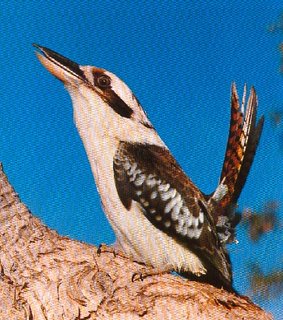 Following the First World War there were numerous calls for an Australian voice. In his poem entitled ‘Echoes’, Frank Wilmot urged Australia to resist foreign influences when he said, “Australia, speak! … Speak in a voice of your own.”[1]
Following the First World War there were numerous calls for an Australian voice. In his poem entitled ‘Echoes’, Frank Wilmot urged Australia to resist foreign influences when he said, “Australia, speak! … Speak in a voice of your own.”[1]In an essay published in 1920 the British-born historian G Arnold Wood noted the development of a distinctly Australian voice when he said, “Australian ideas are the expression of a civilization and a temperament that have become distinct from the civilization and temperament of Britain.”[2]
Boreham participated in the conversation about the unique features of an Australian artistic expression, which the literary critic, Vance Palmer said, involved Australians making a “spiritual adjustment” to their surroundings.[3] Offered as a possible direction for Australian artists to pursue, Boreham said that the distinctive “self-expressing and self-revealing” style of New Zealand literature was largely attributable to the influence of its indigenous people on those active in the arts.[4]
In noting that the Australian “outdoors climate” was not conducive to developing the “indoor” arts, Boreham pleaded for the writing of Australian music. He asked, “Since [Australia] is less hampered and trammeled by antique traditions, why should not ‘a land of lovely voices’ go one step further and give the world the music for which it is wistfully wanting?”[5] His was not a lone plea, for others such as Henry Tate had put forward ideas for “an Australian line of expression in music”.[6]
One area in which Boreham hoped Australia would increasingly find its full expression was in the field of literature. In 1927 he lamented: “A great deal of Australian literature is simply English literature that happens to have been written in Australia. It is not essentially Australian; it is not descriptive of Australia; and a time may come when the fact that it was penned beneath the Southern Cross will pass from the minds of men”.[7]
The outlook was not entirely bleak for in an editorial two months earlier to commemorate Australian Authors Week he cited poets such as C J Dennis whose writings were signaling “the beginning of things ... the outbursts of Australian poesy ... a new minstrelsy”.[8]
In one of his many articles written for the commencement of the annual Tasmanian Art Festival, Boreham asked, “Is there such a thing as Australian art?”[9] Others were asking the same question and the first exhibition of Australian Modern Art in Sydney in 1926 and the return to Australia of artist Tom Roberts in the same year began to provide a positive answer. Echoing the concerns of Australian artists such as Frederick McCubbin,[10] Boreham called for the emergence of a confident style that was drawn from the Australian landscape saying, “The artists fear to depict Australia as it is ... our colours and landscapes are painted like English scenes”.[11] Writing again on the subject in 1942, shortly after the first exhibition of aboriginal art works,[12] Boreham asserted that Australians must avoid the British inferiority complex regarding its art and encouraged artists to develop a confidence in depicting Australian scenes in an Australian way.[13]
Geoff Pound
Image: The kookaburra (laughing bird), a symbol of the Australian voice
[1]Furnley Maurice [Frank Wilmot], ‘Echoes’, in Poems by Furnley Maurice, ed. Percival Serle (Melbourne and Sydney: Lothian Publishing Co. Pty. Ltd., 1944), 42-43.
[2] G Arnold Wood, ‘Australia and Imperial politics’, in Australia economic and political studies, ed. Meredith Atkinson (Melbourne: Macmillan & Co. Ltd., 1920), 402.
[3] Vance Palmer, ‘Future of Australian literature’, Age, 9 February 1935.
[4] Boreham, Mercury, 29 May 1943.
[5] Boreham, Mercury, 6 July 1935.
[6] Clark, A history of Australia vol. 6, 292.
[7] Boreham, Mercury, 12 November 1927.
[8] Boreham, Mercury, 12 September 1927.
[9] Boreham, Mercury, 24 April 1926.
[10] Clark, A history of Australia vol. vi, 81.
[11] Boreham, Mercury, 24 April 1926.
[12]Albert Namatjira’s art was exhibited at the Fine Art Society Gallery in Melbourne in December 1938.
[13] Boreham, Mercury, 17 January 1942.


